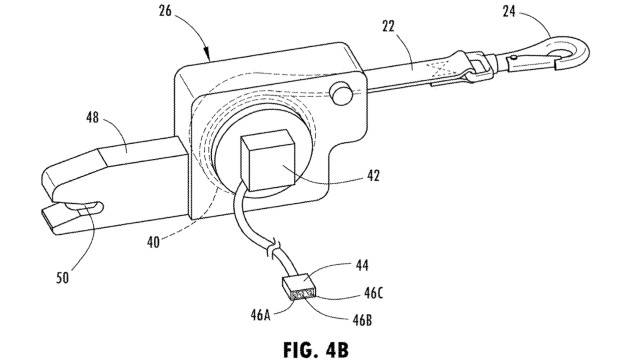Drivers often bring their pets along for the ride, and Ford might have a way to keep them safer. The company recently filed a patent application with the United States Patent and Trademark Office (USPTO) for a pet restraint system.
The application notes that pets are transported in cages, which still allow them significant freedom of movement in a vehicle’s cabin. That might keep the animals happy, but it’s not ideal in a crash, or even if the vehicle becomes unsettled. That’s why human passengers wear seat belts, after all.
 Ford pet restraint system patent image
Ford pet restraint system patent image
The restraint system described in the patent application is a bit like a combination of seat belts and a leash, in fact. One or more straps attach to the pet’s collar and the ISOFIX anchor points normally used for child seats.
These straps are connected to retractors, which can take in slack like the inertia reels in seat belts when needed, according to the application. They’re controlled by sensors that measure acceleration and steering to sense conditions that might lead to pets getting thrown around the cabin, or determine whether a collision is occurring.
 Ford pet restraint system patent image
Ford pet restraint system patent image
Other sensors can track where the vehicle is on a designated route, and adjust the restraints based on anticipated road conditions. Ford also includes a camera to monitor pet passengers.
As with other patent applications, it’s unclear if the pet restraint system will actually reach production. Ford in particular has a habit of firing off patent applications for novel features in rapid succession. But such a system could be a good complement to software-based systems like Tesla’s Dog Mode, or Toyota’s Cabin Awareness tech, currently being tested as a way to prevent children or pets from being left in cars.
Related Articles
- Review: 2022 Lincoln Navigator’s Activeglide system cruises into second place
- Rivian CEO previews new Camp Mode designed to automatically level vehicle at campsite
- Princess Diana’s 1985 Ford Escort RS Turbo S1 sold at auction for $846K
- Farm to asphalt: Bridgestone creates tires with desert shrubs
- Ford tests shape-projecting headlights
















